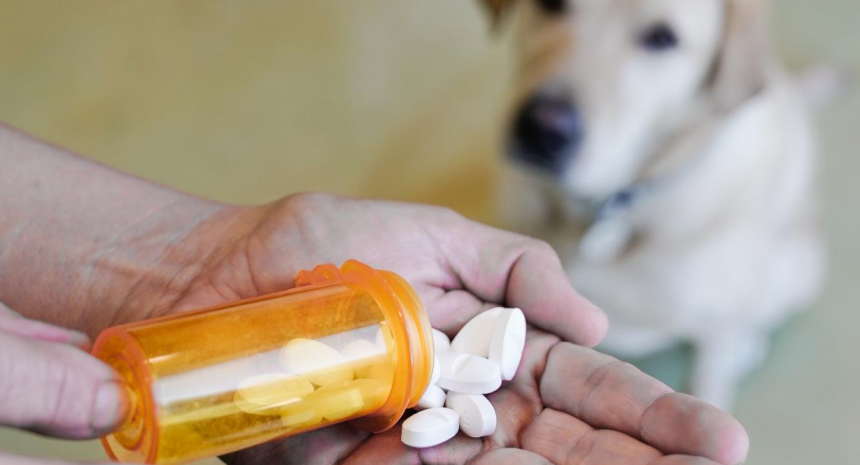Importance of Antimicrobial Use in Veterinary Medicine
The use of veterinary drugs especially antimicrobials is indispensable as they are required for the treatment of diseases (therapeutic), prevention of diseases (prophylaxis), improvement of growth and productivity (growth promoters) as well as for the safety of foods. The most commonly used antimicrobials used in veterinary practice are tetracyclines, pencillin, streptomycin, sulphonamides, aminoglycosides, β-lactams, quinolones etc.
At present the global average consumption of antimicrobials per kilogram of animal produced is estimated at greater than 100 mg/kg. As per the studies about 80% of all the antimicrobials administered in veterinary practice are used as growth promoters and in most cases this exceeds the total antimicrobial use for human medical care.
As per Boeckel it’s estimated that global veterinary consumption of antibiotics in 2013 was around 131,000 tonnes and is projected to reach 200,235 tons by 2030. FAO/WHO has reported that antimicrobial residues in edible animal products has risen above permissible levels in developing nations. In order to curb this, the European legislation has set maximum residue limits for veterinary drug residues in different animal products.
Global Concerns of Their Use
- Drug Resistance: The development of drug resistant bacteria through the food chain in treated animals was observed as early as 1969 by Swan, who reported the development of vancomycin resistance to Enterococci. The fact of animal to human microbial resistance, resistant microbes gain entrance directly or indirectly through animal products and by-products (e.g. milk, eggs etc.).
- Allergy and Hypersensitivity reactions: It has been affirmed that human population estimate of about 4 to 11 % are believed to be allergic to penicillin. Such class of humans consuming meat products having penicillin residues are at the risk of developing allergy manifested as skin rash or severe anaphylaxis. Mild rash to severe dermatitis are some of the skin reactions to sulfonamide exposure. A hypersensitivity reaction to a drug is either IgE mediated or non IgE mediated. IgE mediated reactions occur shortly after drug exposure. Instances of IgE mediated hypersensitivity reactions include urticaria, anaphylaxis, bronchospasm and angioedema. Non- IgE mediated reactions include hemolytic anemia, thrombocytopenia, acute interstitial nephritis, serum sickness, vasculitis, erythrema and toxic epidermal necrolysis.
- Carcinogenic Effects: Carcinogenic residues function by covalently binding intracellular components including DNA, RNA, proteins, glycogen, phospholipids and glutathione. As per the International Agency for Research on Cancer (IARC), metronidazole has been suggested to be carcinogenic in animals.
- Disruptions of normal intestinal flora: Intestinal microflora plays an important role in human physiology. They establish the control and curb the invasion of pathogenic bacteria in the gastrointestinal tract.
- Mutagenic Effect: Mutagens are chemicals or substances with potential to cause mutations in a DNA molecule thereby altering the genetic makeup of a cell.
- Teratogenic effect: Congenital malformation of the fetus during pregnancy as a result of toxic metabolites of drugs or chemical agents has been reported.
Local, Regional and Global data on Antimicrobial Use
A study estimating global antibiotic use in poultry, swine and cattle in 2010 has shown that India accounts for 3 % of global consumption and is among the top consumers worldwide, along with China, the United States, Brazil and Germany. Estimation for 2030 indicates an overall increase of about two-thirds in animal antimicrobial consumption all over the world. The usage of antimicrobials in animal feeds will increase by 82% in India by 2030.
The study showed that all over the world, penicillins, tetracyclines and quinolones are some of the most commonly used antimicrobials and the use of these antimicrobials is higher in countries consuming high meat. The WHO’s list of critically important antimicrobials like ampicillin, amoxicillin, erythromycin etc which are critically important for human health and their use should be restricted in the veterinary sector as this can increase the chances of drug resistance against these important antimicrobials.
Responsible Antimicrobial Use in Veterinary Medicine
The success of antimicrobial therapy depends upon maintaining, at the site of infection, a drug concentration that will result, directly or indirectly, in the death or control of the infectious organism with minimal deleterious effect to the host. In order to achieve this aim the antimicrobial agent must have activity against the organism at its site of infection and it must be administered in such a way as to maintain an effective inhibitory or lethal concentration. These principles apply to therapy in all species and dictate the choice of antimicrobial agent to be used.
However, in large animal veterinary practice cost is also critical. This consideration includes not only the primary cost of the drug but also related factors such as the ease and frequency of administration and the duration of treatment. Tissue residue problems and withdrawal periods must also be taken into consideration. The dose rates, route of administration and frequency of administration required to achieve these concentrations for each of the selected antibiotics should be considered. The final selection would be based on a consideration of the potential toxicity to the host, on the likely relative efficiency of each drug, on the cost and ease of administration, and in food animals on costs associated with the relative withholding periods.
Environmental and public health benefits of Responsible Use of Antimicrobials
- Public health significance: The responsible use of antimicrobials leads to the reduction in the drug residues in animal foods and ultimately in the environment which ultimately results in the good health of soil, animals, humans and environment as a whole in the one health context.
- Improves Food safety concern: When drugs especially antimicrobials are used rationally and responsibly, the potential adverse effects of their use as a result of consumption of animal products are reduced and their efficacy is increased. However when they are used excessively and irresponsibly the chances of drug residues is increased in animal origin foods like milk, meat, eggs etc which induce harmful and adverse effects in humans as consumers of such food.
- Reduces the emergence of drug resistance microbes: Human health is affected due to widespread of antimicrobial resistant pathogens which can occur due to irresponsible use of antimicrobials. Responsible use of antimicrobials significantly minimizes the risk of resistance development in microbes.
- Reduces the development of drug residues: Foods of animal origin such as meat, milk and eggs intended for human consumption may have drug residues. In some countries where legislative directions are followed by the farmer, producer, drug residue levels will be within safe limits. In some cases levels of residues exceed permitted maximum limits. This can be due to irresponsible use of antimicrobials in veterinary medicine.
- Economic significance: The primary economic implications of resistance on the decreased efficacy of antimicrobial therapy includes the necessity to switch to more costly drugs that may be unaffordable for most primary health care programmes. Antimicrobial residues remain very significant from the perspective of international trade and consumer confidence as it results in international trade barrier. Besides major economic losses and animal welfare problems could arise in veterinary medicine as antimicrobial resistance has been associated to cause therapy failure and higher mortality and morbidity rate in animal diseases.
What to do to overcome the problem
Some of the measures which can promote the responsible use of antimicrobials in veterinary medicine are as follows:
- Herd health management: All food animals must be maintained in a clean and healthy environment. A scientific nutritional programme should be maintained to meet growth, maintenance and lactation needs. The veterinarians should follow prophylactic and preventive measures to check the onslaught of diseases in advance in order to avoid the irresponsible use of antimicrobials.
- Alternatives for antimicrobial growth promoters: Developing alternatives to antimicrobials that work through similar mechanisms, promoting growth while enhancing the feed conversion efficiency is the best option.
- Competitive exclusion products: A variety of species of bacteria that are marketed as being friendly. The mechanism of action that by allowing these bacteria to colonize the GIT, potential pathogens are prevented from colonizing the gut and thus infection can be avoided.
The use of prebiotics, probiotics, feed enzymes, adopting strict infectious control mechanisms and indigenous technical knowledge, ethnoveterinary practices, complementary and alternative medicine, adhering to withdrawl periods, rational use of antimicrobials and promotion of disease resistant livestock breeds are some of the other measures that increase the chances of responsible usage of antimicrobials.
Role of SKUAST Kashmir in promoting the responsible use of antimicrobials in veterinary medicine
Research has been conducted in studying the rationality of drug use in veterinary practice and in determining the veterinary drug residues in animal foods like milk, meat and poultry by the division of Veterinary Medicine FVSc Shuhama in collaboration with the Department of Food Technology, University of Kashmir which may be elaborated in future years.
Division of Veterinary Microbiology and Immunology FVSc Shuhama is running INFAAR (Indian Network for Fishery and Animal AMR Surveillance) project which is a collaborative effort between FAO, ICAR and other organizations including SKUAST Kashmir to combat Antimicrobial Resistance in India’s animal and fisheries sector and aims at developing surveillance system promoting data collection and analysis to understand antimicrobial resistance (AMR) trends and suggest interventions in this regard.
Besides recently the Division of Biotechnology FVSc Shuhama is starting a DST sponsored Centre of Excellence for addressing Antimicrobial Resistance. It is a multi-institute project in which the SKUAST Kashmir is the leading institute and SKIIMS will cover the human aspect. The other institutes involved are IMTECH Chandigarh and IIT Kanpur.
(The Author is Head Veterinary Medicine, SKUAST Kashmir)








